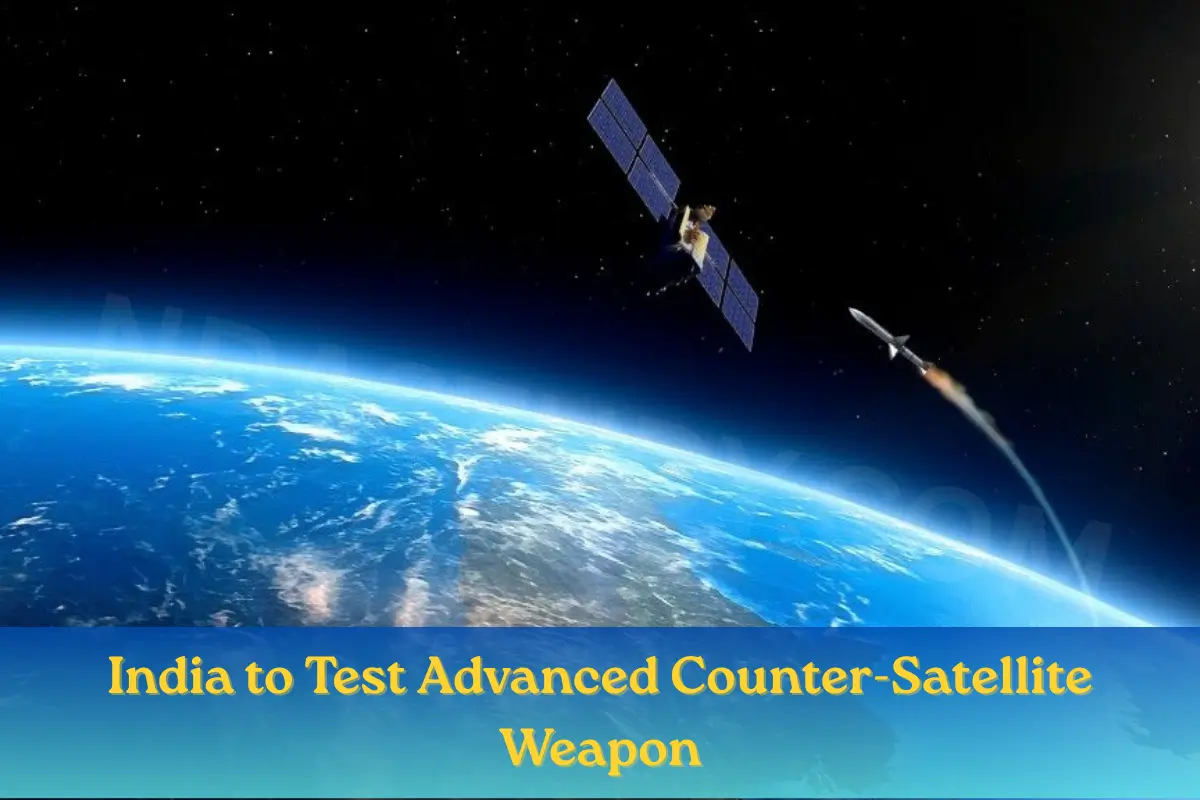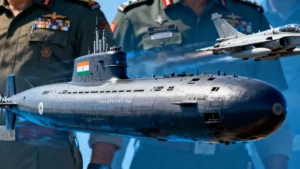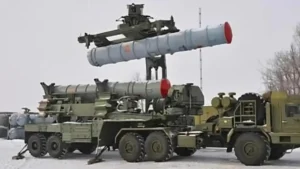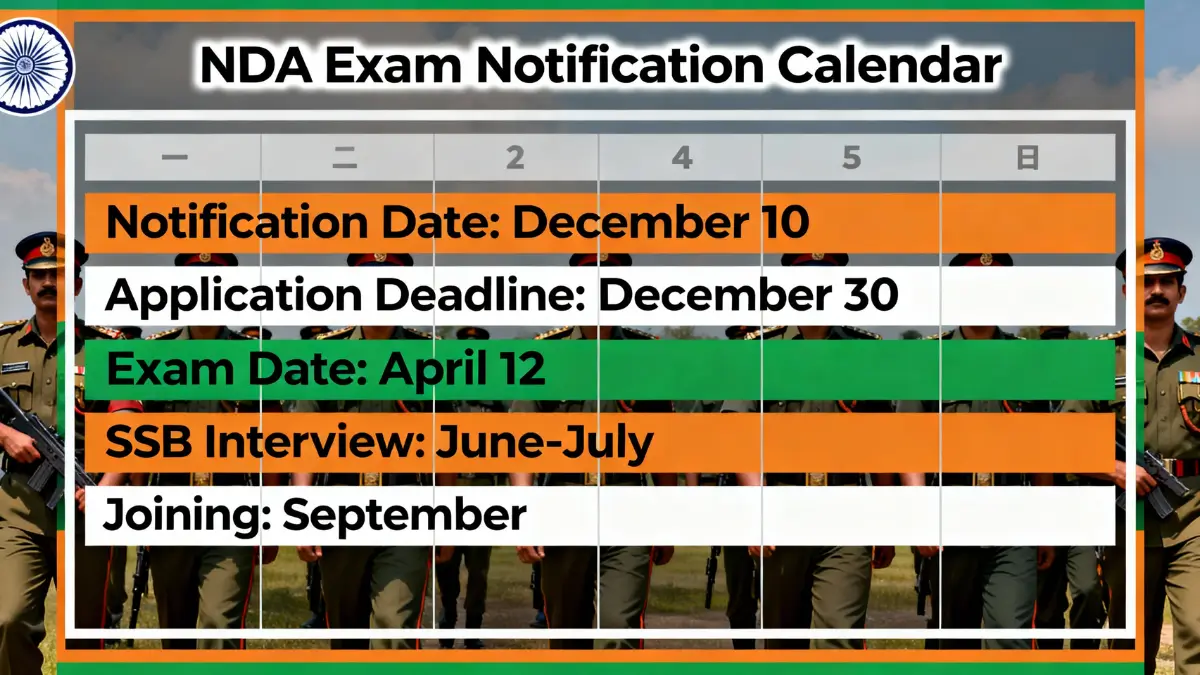India is set to make a significant advance in space defence with plans for “India to Test Advanced Counter-Satellite Weapon.” This upcoming test marks a crucial escalation in efforts to protect vital satellite infrastructure. Following the landmark 2019 Mission Shakti test, which made India the fourth country in the world to demonstrate anti-satellite (ASAT) capabilities by intercepting a satellite in low Earth orbit, this trial, led by the Defence Space Agency, aims to showcase improved precision and enhanced technological capabilities.
Currently, over 6,800 pieces of space debris have been catalogued globally from previous ASAT tests conducted by various countries, including India. The new test emphasises India’s strategic intent to strengthen space deterrence amid the increasing militarisation of space. The need to secure satellite assets—essential for communication, surveillance, navigation, and national security—has never been more pressing. Therefore, the initiative labelled “India to Test Advanced Counter-Satellite Weapon” represents a significant statement as we move into the 2025 era of growing space weaponisation.
India to Test Advanced Counter-Satellite Weapon: What’s Happening?
India is set to make headlines again as it prepares for a significant milestone: India to Test Advanced Counter-Satellite Weapon in a move led by the Defence Space Agency. Building on the groundbreaking 2019 Mission Shakti test—which established India as the fourth country globally to demonstrate anti-satellite (ASAT) capability—this upcoming test is scheduled imminently to validate enhanced technologies and strengthen India’s deterrence in space.
The Defence Space Agency India, the nation’s dedicated military space command, will oversee this crucial test, aiming to showcase improved precision and readiness to counter threats against vital satellite infrastructure. This test not only advances India’s strategic capabilities but also addresses the growing imperative to protect communication, navigation, and surveillance satellites critical to national security. With space emerging as the new frontier of military competition, India’s counter-satellite weapon test marks a decisive effort to secure its assets and assert its position among global space powers.
Why This Matters
The significance of India’s development of advanced counter-satellite weapons is best understood by revisiting the landmark Mission Shakti anti-satellite (ASAT) test conducted on March 27, 2019. During this mission, India successfully demonstrated its ability to intercept and destroy a live satellite in low Earth orbit. The test utilised an indigenously developed kinetic kill vehicle, the Prithvi Defence Vehicle Mark-II, to precisely target the Microsat-R satellite at an altitude of approximately 283 kilometres. This achievement established India as only the fourth country in the world, following the United States, Russia, and China, to validate its ASAT capability.
ASAT capability is essential for space deterrence, as it allows nations to protect their critical space assets—such as communication, navigation, and surveillance satellites—from hostile attacks in an increasingly contested and militarised space environment. Possessing such a capability acts as a strategic deterrent, signalling to potential adversaries that any attack on national satellites would provoke a credible and capable response. This deterrence not only safeguards India’s defence and civilian infrastructure but also reinforces its sovereignty in this final frontier.
Globally, only four nations have demonstrated operational ASAT weapons. India’s successful Mission Shakti test marked its formal entry into this exclusive group, showcasing its advanced technological expertise and strategic foresight in space security. The upcoming initiative to test advanced counter-satellite weapons aims to build on this foundation by demonstrating enhanced precision, expanded operational range, and a strengthened deterrence posture, further elevating India’s role in shaping the evolving norms of outer space defence.
What is an ASAT Weapon?
An Anti-Satellite (ASAT) weapon is a specialised technology designed to disable, destroy, or disrupt satellites in orbit for strategic or defensive purposes. As India prepares for its next significant step, there is growing attention on its plans to test an advanced counter-satellite weapon, which represents a crucial development in space defence.
ASAT weapons are categorised into two main types: kinetic and non-kinetic.
Kinetic anti-satellite weapons (ASATs) operate by physically striking a satellite with a high-velocity interceptor missile or projectile. This type of attack completely destroys or incapacitates satellites through direct impact. India’s 2019 Mission Shakti is a prime example, as it used a kinetic kill vehicle to precisely intercept and destroy a satellite in low Earth orbit at an altitude of approximately 300 kilometres. While effective, kinetic attacks generate significant space debris, posing risks to other orbiting assets.
In contrast, non-kinetic ASATs disable or disrupt satellites without physical contact. These methods include cyberattacks that target satellite control systems, jamming or spoofing satellite signals, and directed energy weapons, such as high-powered lasers designed to blind or damage satellite sensors. Non-kinetic weapons have the advantage of minimising orbital debris and can be deployed from ground stations, aircraft, or even other satellites.
India’s upcoming advanced counter-satellite weapon tests aim to enhance the country's capabilities in both kinetic and potentially non-kinetic technologies. This reflects global trends as space becomes an increasingly critical domain of military competition. With only four nations—India included—having demonstrated operational ASAT capabilities, these tests underscore India's strategic determination to protect its space assets, which are vital for communication, navigation, surveillance, and national security.
Strategic Significance
India to test an advanced counter-satellite weapon that will significantly enhance national security by strengthening its ability to protect crucial space assets essential for modern warfare and communication. Satellites are vital for intelligence gathering, navigation, missile warning, and battlefield coordination, especially in the strategically sensitive Indo-Pacific region. By demonstrating credible anti-satellite (ASAT) capabilities, India sends a strong deterrent message to adversaries, particularly China and Pakistan.
This ASAT test reinforces India’s commitment to securing its space assets, ensuring continuous surveillance and command-and-control operations vital for national defence. As India tests an advanced counter-satellite weapon, it joins an exclusive group of nations with operational ASAT capabilities, highlighting its growing technological prowess and solidifying its role as a key security player in the Indo-Pacific, which influences the broader balance of power in the region.
Potential Impact & Global Reaction
India will soon conduct a test of its counter-satellite weapons. This test will improve its ability to defend its satellites, which are important for communication and security. It also sends a strong message to regional rivals like China and Pakistan. This test is significant for India’s role in the Indo-Pacific region and can raise its status as a space power. However, it may increase concerns about weaponising space and creating space debris. It could also lead to discussions about stricter space arms control. Overall, this test is a major step in India’s defence strategy. It will shape global conversations about space security and highlight the need to balance military use of space with peaceful purposes.
Author’s Words: What’s Next
India’s upcoming test of its advanced counter-satellite weapon marks a bold stride in securing its space assets and asserting strategic deterrence. As global powers ramp up space militarisation, India’s move signals its readiness to protect national interests in this new frontier. Moving forward, the world will watch closely how India balances defence innovation with calls for responsible space use — shaping the future of space security for years to come.
Stay Tuned & Stay Connected!












